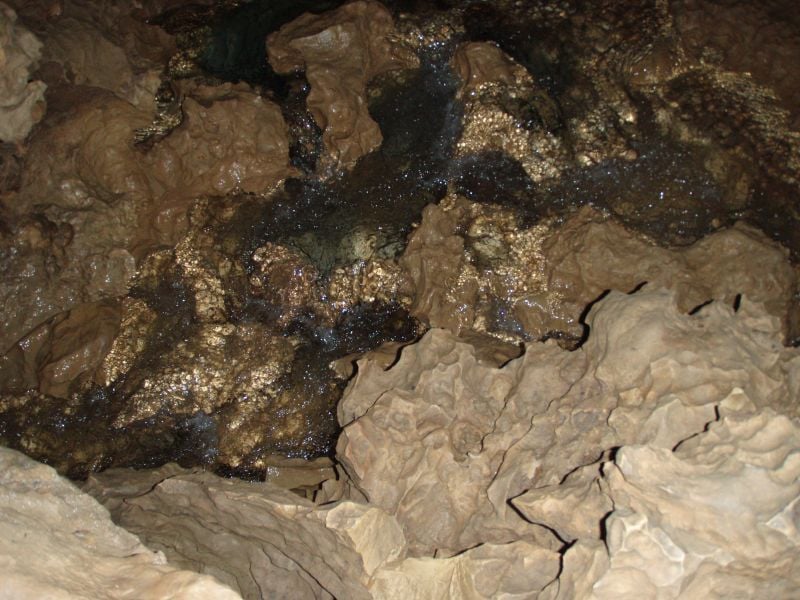Discover 4 hidden attractions, cool sights, and unusual things to do in Puente Viesgo (Spain). Don't miss out on these must-see attractions: Cave of La Pasiega, Cave of El Castillo, and Cueva de Las Monedas. Also, be sure to include El Castillo Cave in your itinerary.
Below, you can find the list of the most amazing places you should visit in Puente Viesgo (Cantabria).
Table of Contents
Cave of La Pasiega

Also known as: Cueva de La Pasiega
Historical landmark in Spain. Cueva de La Pasiega, or Cave of La Pasiega, situated in the Spanish municipality of Puente Viesgo, is one of the most important monuments of Paleolithic art in Cantabria. It is included in the UNESCO World Heritage List since July 2008, as part of the inscription: Cave of Altamira and Paleolithic Cave Art of Northern Spain.
It is located in the heart of the uniprovincial community, in the middle of the Pas River valley, around the cave of Hornos de la Pena and Monte Castillo, in the same group of caves as Las Monedas, Las Chimeneas, and the cave of El Castillo. The caves of Monte Castillo form an amazingly complete series, both as regards the material culture of the Old Stone Age and from an artistic point of view. La Pasiega is basically an enormous gallery, its known extent more than 120 meters, that runs more or less parallel to the slope of the mount, opening to the surface at six different places: six small mouths, the majority obstructed, of which two can be accessed for inspection. The principal gallery is approximately 70 meters and opens to deeper secondary galleries, winding and labyrinthine, which in places broaden out to form large chambers. Thus one refers to "room II-VIII", the room called "Gallery B", or "room 11" of "Gallery C", all with paleolithic decorations. The two last mentioned rooms contain some of the rock sanctuaries that will be mentioned below.
The recorded remains belong mainly to the Upper Solutrean and the Lower Magdalenian ages, although older objects are also found. In 2018 uranium-thorium dating revealed a scalariform (ladder shaped) symbol to be older than 64,000 years and therefore made by Neanderthals. Throughout the cave are many 'walls' with paintings and with engraved or incised images. There are representations of equines (horses), cervids (deer, male and female) and bovines (cattle). There are also many abstract symbols (idiomorphs), suggesting patterns of repeated characters.[1]
Cave of El Castillo

Also known as: Cueva de El Castillo
Tourist attraction in Spain. The Cueva del Castillo, or Cave of the Castle, is an archaeological site within the complex of the Caves of Monte Castillo, in Puente Viesgo, Cantabria, Spain.
The archaeological stratigraphy has been divided into around 19 layers, depending on the source they slightly deviate from each other, however the overall sequence is consistent, beginning in the Proto-Aurignacian, and ending in the Bronze Age.
The El Castillo cave contains the oldest known cave painting: a large red stippled disk in the Panel de las Manos was dated to more than 40,000 years old using uranium-thorium dating in a 2012 study. This is consistent with the tradition of cave painting originating in the Proto-Aurignacian, with the first arrival of anatomically modern humans in Europe. A 2013 study of finger length ratios in Upper Paleolithic hand stencils found in France and Spain determined that the majority were of female hands, overturning the previous widely held belief that this art form was primarily a male activity.
Cueva del Castillo was discovered in 1903 by Hermilio Alcalde del Río, a Spanish archaeologist, who was one of the pioneers in the study of the earliest cave paintings of Cantabria. The entrance to the cave was smaller in the past and has been enlarged as a result of archaeological excavations. Alcalde del Río found an extensive sequence of images executed in charcoal and red ochre on the walls and ceilings of multiple caverns. The paintings and numerous markings and graffiti span from the Lower Paleolithic to the Bronze Age, and even into the Middle Ages. There are over 150 depictions already catalogued, including those that emphasize the engravings of a few deer, complete with shadowing.[2]
Address: Carretera de las Cuevas, s/n, 39670 Puente Viesgo
Cueva de Las Monedas

MONEDAS Forest-a cave located in the southwestern slope of the Monte Castillo Mountain near Puente Viesgo in Spanish Cantabria. Archaeological site.
El Castillo Cave

Museum
Address: Calle de Manuel Pérez Mazo, 74, 39670 Puente Viesgo, Puente Viesgo